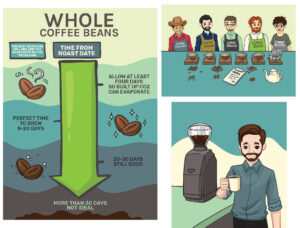
One of the most iconic advertising feats in history, the California Milk Processor Board’s “Got Milk?” campaign was launched in 1993. Its clever and memorable tagline successfully boosted milk consumption in the United States. However, things went awry when the campaign was translated into Spanish. Here’s the marketing blunder surrounding the “Are you lactating?” campaign and what the association did to correct it.
Table of Contents
A Brief Background
When the California Milk Processor Board launched the “Got Milk?” campaign, it rapidly became a cultural sensation. Its simple yet powerful tagline resonated with a broad audience, more so when it was paired with humorous and relatable advertisements. These ads often depicted scenes where people found themselves in desperate need of milk, emphasizing the importance of having milk readily available.
The campaign successfully raised awareness about the health benefits of drinking milk. It encouraged people to incorporate it into their daily diets. Its widespread popularity also led to several parodies and references in pop culture. This further cemented its place in advertising history.
The success of “Got Milk?” illustrated the power of a well-designed marketing message and its ability to influence consumer behavior on a grand scale.
The Blunder
When they translated the campaign for its Spanish-speaking audiences, a significant blunder occurred. The phrase “Got Milk?” was translated to “¿Estás lactando?” which directly means “Are you lactating?” The more appropriate translation would be “¿Tienes leche?” (“Do you have milk?”), which more closely matches the original intention of the campaign. The former wasn’t only incorrect but carried a wholly different and unintentional meaning. It led to confusion and amusement among its target audience.
Several cultural and linguistic missteps led to the blunder. They are:
- Literal translation: The translators opted for a literal translation of the phrase without considering the cultural context and idiomatic expressions in Spanish. This resulted in a phrase that was technically correct but contextually inappropriate.
- Lack of cultural sensitivity: The campaign should have accounted for the cultural nuances and sensitivities of the Spanish-speaking audience. The concept of lactation is specific and personal, thus making the translation awkward and off-putting.
- Inadequate localization: Effective localization goes beyond direct translation. It involves adapting the message to fit the cultural and linguistic context of the target market. The campaign’s lack of proper localization resulted in a message that did not resonate well with its Spanish-speaking consumers.
This blunder is a hard lesson and a cautionary tale about the importance of cultural sensitivity and accurate localization in global marketing efforts.
Impact of the Blunder
The mistranslation had a mixed impact on the brand’s image. On the plus side, it brought plenty of attention to the campaign, albeit not always positive. The humorous nature of the blunder made it memorable. However, it highlighted a lack of cultural awareness, which could be seen as a negative reflection of the brand’s understanding of its diverse audience.
On the other hand, the impact on sales was more detrimental. The confusion caused by the mistranslation likely hindered the campaign’s effectiveness in Spanish-speaking markets. Consumers who were puzzled or amused by the slogan may not have been motivated to increase their milk consumption, defeating the campaign’s primary purpose.
Lessons Learned
The “Got Milk?” blunder is a valuable lesson for marketers about the importance of cultural sensitivity and thorough market research. Translations must be not only linguistically accurate but also culturally appropriate for the success of any international campaign. Despite the initial setback, the campaign remains a landmark in advertising history. It demonstrates both the power and pitfalls of global marketing.
Here are a few of the most vital lessons we should learn from this marketing blunder:
- Understanding cultural nuances: Always remember that what works in one culture may not translate well to another. This is a prime example of how a simple phrase can have unintended meanings in various languages.
- Engaging local experts: Collaborating with local marketing experts can help prevent this. They can provide valuable insights into cultural norms and preferences. This can significantly help craft messages that resonate well with your target audience.
- Building trust and respect: Cultural awareness and respect can build trust with consumers. It demonstrates that your brand values and understands its diverse audience, which can, in turn, enhance brand loyalty and reputation.
Accurate translation and localization also play a crucial role in global campaigns. Here are a few vital factors to consider:
- Precision in translation: Accurate translation ensures your message is conveyed correctly. It involves not just literal translation but also the consideration of idiomatic expressions and cultural context.
- Localization beyond language: Before launching a campaign, test it with a sample of your target audience. Gather feedback that can identify potential issues and allow for necessary adjustments.
- Continuous learning and adaptation: Marketing to a global audience requires constant learning. Brands should always seek valuable insights and adapt their strategies to stay culturally relevant and effective.
Corrective Measures
To address the blunder, the California Milk Processor Board has taken the following corrective measures:
Addressing the Mistake
- Immediate response: When they learned of the mistranslation, the California Milk Processor Board quickly pulled the ads from circulation to prevent further confusion and potential damage to the brand’s image.
- Apology and clarification: The board issued public apologies and clarifications, which helped ease some of the adverse reactions and showed its commitment to correcting the error.
- Consulting experts: They worked with bilingual marketing experts and cultural consultants to ensure that future translations would be accurate and culturally appropriate.
Introduction of New Campaigns Specifically for Spanish-Speaking Audiences
- Revise slogan: The board introduced a new slogan, “Familia, Amor y Leche” (Family, Love, and Milk). This resonated better as it emphasized family values and the importance of milk in daily life.
- Localized content: They created ads featuring popular Hispanic personalities and culturally relevant scenarios, which helped them craft a stronger connection with their target market.
- Community engagement: The board sponsored events and initiatives within the Spanish-speaking communities. They hosted health fairs and school programs to promote the health benefits of milk consumption. This allowed for a more direct and personal approach.
- Bilingual campaigns: The board designed succeeding campaigns using English and Spanish to air consistent and clear messaging.
These corrective measures not only helped them repair their image, but they also showed the importance of cultural sensitivity and accurate localization.
Final Thoughts
The marketing blunder of the California Milk Processor Board’s “Got Milk?” campaign faced a genuine setback. It resulted in the unintended yet humorous “Are you lactating?” slogan. The error is a stark reminder to all marketers to always be sensitive to culture and strive for accurate localization when doing global marketing.
About the author

Celeste Zosimo
Celeste is a former traditional animator and now an SEO content writer specializing in graphic design and marketing topics. When she's not writing or ranking her articles, she's being bossed around by her cat and two dogs.
































